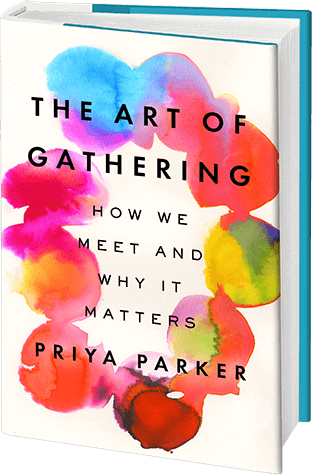Why Have Class?
October 13, 2021
 By Dr. Chuck Gobin, Associate Dean of Curriculum and Pedagogy
By Dr. Chuck Gobin, Associate Dean of Curriculum and Pedagogy
Priya Parker, author of The Art of Gathering: How We Meet and Why It Matters, has some great resources for thinking more deeply about the importance of gathering and about how to re-evaluate our patterns and practices of meeting—whether those are informal gatherings like the Wednesday/Friday lunches on the semi-circle organized by David Swartz or more formal gatherings like Faculty Assembly, committees, and department meetings.
Why bring this up on our Teaching and Learning page? I would suggest we think for a moment about framing our class sessions as meetings. They are, of course, just that, but we frequently disassociate “class” from other kinds of meetings. Ask yourself, “do I give the same attention to considering the purpose, the content, and the structure of my class sessions as I would if I were leading a group charged with a major campus initiative, or if I were leading a major session at a national conference in my discipline?”
The blessing and curse of “school” and “classes” is that all of us have been through the drill since we were five. The students walk into the room, take their seats and face front, and wait for something to begin. The teacher likewise comes in, armed with the syllabus, and it is a temptation for everyone to go on auto-pilot. Our students’ level of interest and engagement is then dependent on their self-selected and pre-conceived ideas of the course or discipline: “This will be great because it is about . . .” or “I’m going to be bored because I don’t like . . .”
A different blessing and curse has been the pandemic. No one needs convincing about the curse part of COVID, but Parker has argued in her recent talks that COVID has given us an opportunity to ask the fundamental questions that surround all gatherings: why are we here? What is my role in this gathering? Is this worth my time? Are the things we’re doing the kinds of things we can only do together as a group? In her “New Rules For Gathering,” she includes
Rule #1. Give Your Gathering a Purpose
Rule #2. Make Purpose Your Bouncer
Rule #3. Design Your Invitation To Persuade
Rule #4. Ditch Etiquette For Rules (And Create A More Playful World)
Rule #5. Close With Intention
Even as we are at the midpoint of the Fall semester, you can begin to implement these ideas in your teaching now; you don’t have to wait for January.